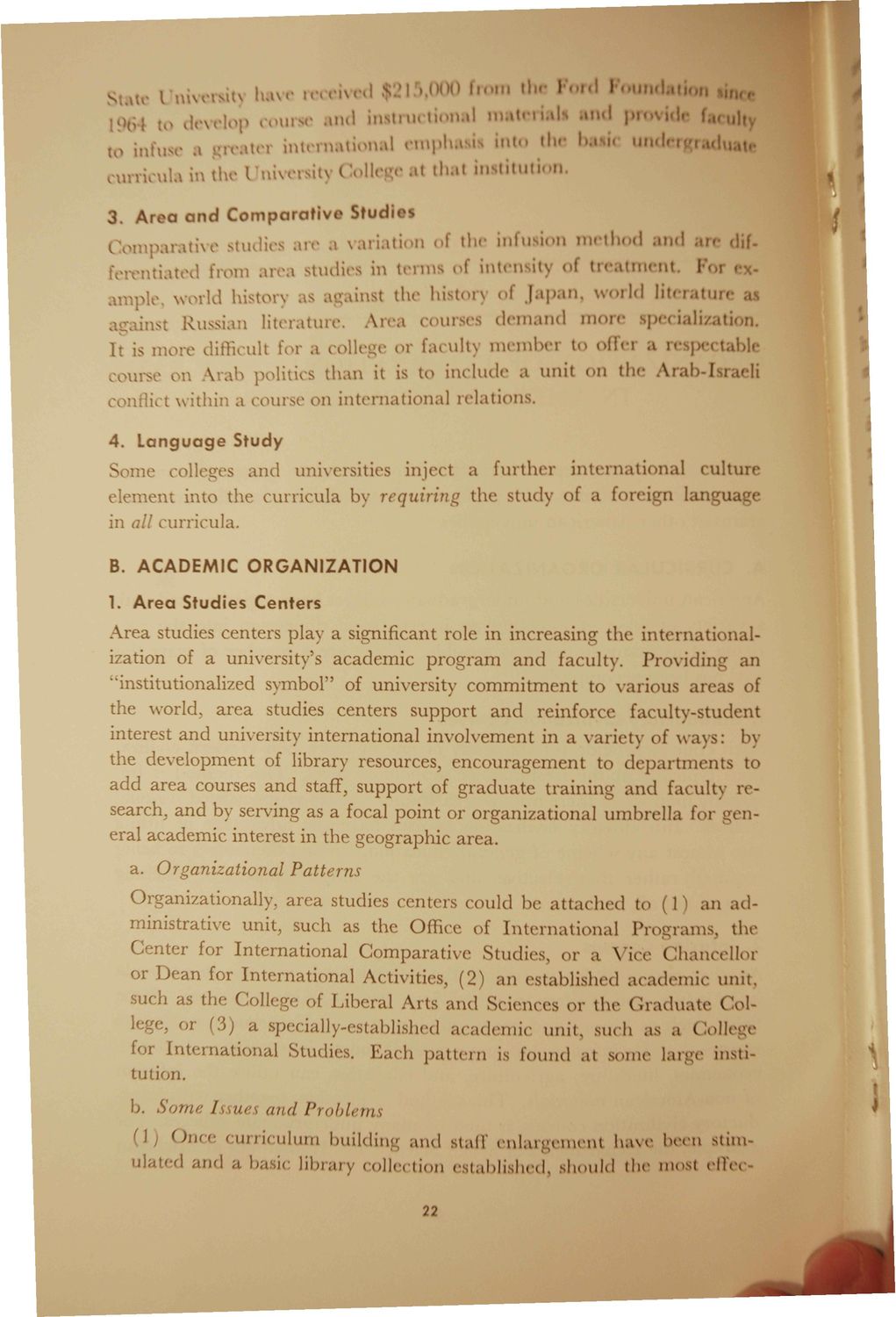Caption: Planning Report - Future of International Programs (1968)
This is a reduced-resolution page image for fast online browsing.

EXTRACTED TEXT FROM PAGE:
Suu> l niversit) have receh liHH : > develop course and > to infuse a greater Internal curricula in the Unh it) * I $21 0 from thi i rd l uncUl instruct nal matci ill and pi (.„ „|, >nal emphai into the lw m.-lr,.-,.„!,,.,, He • ai thai institutj n 3. Area a n d Comparative Studies i .ir.iti\<- studii ire a variation of the infusion methi und an lif. ferei iated from area studies in terms imple, w I history a dnst the historj of Japan, world literature as Russian literature, Ai a emu s demand more sp li/ati ,. 1 is more difficult for a college or facult) member to offei a n pectabli ourse on Arab politics than it is to include a unit on the \rab-l raeli conflict within a course on international relations. 4. Language Study Seme colleges and universities inject a further international culture element into the curricula by requiring the study of a foreign language in all curricula. B. ACADEMIC ORGANIZATION 1. Area Studies Centers si<rm an "'institutionalized symbol" of university commitment to various areas of the world, area studies centers support and reinforce faculty-student interest and university international involvement in a variety of ways: by the development of library resources, encouragement to departments to add area courses and staff, support of graduate training and faculty research, and by serving as a focal point or organizational umbrella for general academic interest in the geographic area. a. Organizational Patterns Organizationally, area studies centers could be attached to (1) an administrative unit, such as the Office of International Programs, the Center for International Comparative Studies, or a Vice Chancellor or Dean for International Activities, (2) an established academic unit, such as the College of Liberal Arts and Sciences or the Graduate Col1 or (3; a specially-established academic unit, such as a ( ollege for International Studies. Each pattern is found at some lar-e institution. b. Some Issues and Problems Once curriculum building and stair enlaa ament have been stimulated and a basic library coll. , |, ()I1 established, should the most ellcc22 /j
|